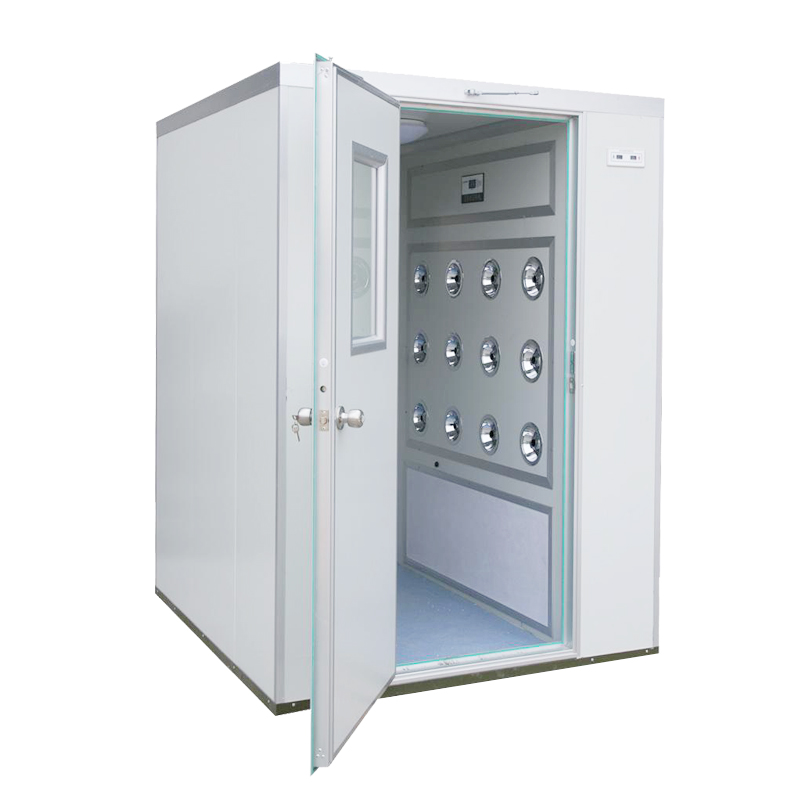

Air showers are just one of several decontamination sol […]
Air showers are just one of several decontamination solutions used in controlled environments, and the choice of decontamination method depends on the specific requirements and challenges of the application. Here's how air showers compare to other decontamination solutions:
Air Showers vs. UV-C Germicidal Lamps:
Air Showers: Air showers remove loose particles from personnel, equipment, or materials using high-velocity, filtered air streams. They are highly effective at particle removal.
UV-C Germicidal Lamps: UV-C lamps emit ultraviolet (UV) light at a specific wavelength that can kill or inactivate microorganisms such as bacteria and viruses. UV-C lamps are effective for disinfecting surfaces and the air, but they do not remove particles or dust.
Air Showers vs. Gowning Procedures:

Air Showers: Air showers are often used in conjunction with gowning procedures, ensuring that individuals are properly decontaminated before entering cleanrooms. They primarily remove particles.
Gowning Procedures: Gowning procedures involve the wearing of specialized cleanroom attire, including gowns, gloves, and hairnets, to prevent contamination. While effective, they do not remove particles from existing attire or equipment.
Air Showers vs. Pass-Through Chambers:
Air Showers: Air showers are typically used for personnel decontamination but can also be used for materials and equipment. They are efficient at removing loose particles.
Pass-Through Chambers: Pass-through chambers provide a means of transferring materials and equipment into cleanrooms without direct contact with personnel. They prevent contamination from entering controlled environments but do not remove particles or contaminants from the objects being transferred.
Air Showers vs. Air Filtration Systems:
Air Showers: Air showers focus on personnel and object decontamination by physically removing particles. They are typically used at cleanroom entrances.
Air Filtration Systems: Air filtration systems use HEPA or ULPA filters to capture airborne particles and microorganisms within cleanrooms. They help maintain clean air quality throughout the cleanroom but do not address surface or personnel decontamination.
Air Showers vs. Chemical Decontamination:
Air Showers: Air showers do not use chemicals or disinfectants for decontamination. They rely on physical removal of particles.
Chemical Decontamination: Chemical decontamination methods involve the use of disinfectants or cleaning agents to kill or neutralize microorganisms on surfaces. Chemical decontamination is effective for sterilizing surfaces but may not remove particles.
Air Showers vs. Autoclaves:
Air Showers: Air showers are used for decontamination of personnel and objects entering controlled environments. They do not sterilize equipment or materials.
Autoclaves: Autoclaves use heat and pressure to sterilize equipment, materials, and laboratory glassware. They are highly effective at killing microorganisms but do not remove particles.
Air Showers vs. Fumigation:
Air Showers: Air showers are not used for fumigation. They primarily address particle contamination.
Fumigation: Fumigation involves the use of gaseous or aerosol disinfectants to eliminate microorganisms in enclosed spaces. Fumigation is a more aggressive method than air showers and may be used in some critical environments.
In summary, air showers are highly effective at removing loose particles from personnel, equipment, or materials entering controlled environments. They complement other decontamination methods, such as UV-C lamps, gowning procedures, and air filtration systems, which may be necessary to address specific contamination concerns in cleanrooms and other controlled environments. The choice of decontamination solution depends on the unique requirements and contamination risks of the application.
Our new models offer superb design;competitive prices and their new features give them distinct advantages over similar products from other manufacturers.